Text

‘We never talked about men or clothes. It was always Marx, Lenin and revolution – real girls’ talk.’ – Nina Simone
95 notes
·
View notes
Photo
With the current civil war in Sudan between the RSF and the government. Here is a reminder of what the RSF did in 2019, on the orders of the government. It shows the classic military junta dictatorship disregard, demeaning and debasement of women opposition. Not taking women seriously as political agents, but punishing them in an intimate, personal, sexually humiliating manner as women. Often symbolized in women's most personal intimate clothing such as panties. In this photo we see how RSF hung women protester's panties like trophy flags.


The The Rapid Support Forces (Arabic: قوات الدعم السريع) which are attempting to seize power in Sudan took part in the Khartoum massacre on 3 June 2019.
Feminist activists, protesters and revolutionaries were particularly targeted. Using the classic tactics of Junta patriarchy, the RSF displayed and paraded as trophies the panties of the activist women they had captured and raped. This act of public humiliation is meant to de-politicize women’s struggle and reduce them to their sexuality. To replace their flag with their underwear. They gloat over displaying the most personal, intimate, private garments of activists who had dared defy the government.
https://twitter.com/All4Sudan/status/1135596180711321601
https://www.france24.com/en/20190619-sudan-rape-reports-militia-protest-justice
https://en.wikipedia.org/wiki/Khartoum_massacre
#Sudan#women's rights#Khartoum#Rapid Support Forces#free sudan#sudan crisis#War in Sudan#sudan civil war
40 notes
·
View notes
Text
Graciela García Romero was kidnapped on October 15, 1976, in Buenos Aires City. After she was detained, she spent more than a month in the area called a “capucha”, lying on the floor with her head covered with a hood. Sometime later, she was moved to another space on the third floor.
It was there she came to learn the meaning of the phrase: “544, downstairs.” Every time a guard said it, she shrank inside. It meant one of the officers would come and rape a fellow detainee. ‘544’ was the identity that person had been ascribed within ESMA, dehumanising the prisoner and erasing their identity.
A memory returns to her as she talks. Once, she recalls, she was with three other female prisoners when a retired naval captain, Francis Whamond, appeared.
“Which personal care products do you want?” he asked the women.
“We looked at each other and thought he had gone mad,” Graciela recalls. “But [in fact] they were preparing us for them.”
How many of her comrades were raped? “I think that all the female prisoners who were held at ESMA in 1976 were raped. In that year they didn’t hide the crudity of the extermination,” she responds.
“The operation of the concentration camp changed in 1977, when the Montoneros’ finance arm was abducted. At that moment the repressors’ sexual drive was softened, and they focused on money. That’s what they effectively did: steal,” she said.
One day she was taken down to the office of Jorge “Tigre” Acosta, a Navy captain the head of the ESMA taskforce. There was little light in the room. He was wearing a light blue T-shirt and had a piece of cake in front of him, Graciela recalls.
“Do you want some?” he asked.
“Yes,” she answered. She was starving. For months she had eaten had sandwiches with rotten meat.
Acosta, who is now serving life in prison for numerous human rights crimes, spoke for several minutes. Eventually he said: “Well, tomorrow I’m going to get you out of here.”
Graciela knew what was coming. The next day she was taken to an apartment used by naval officers.
There they would rape them, use them, and later return them to the concentration camp. –
Shortly after she was abducted, Graciela was taken to a holiday home with other prisoners. Acosta and other naval officers were also there.
“Well, pick your couple,” ordered Captain Acosta.
Since none of them moved, he was the one who decided the pairings.
For Graciela, the sexual violence committed at the ESMA was planned. In their book on the subject, Putas y Guerrilleras, authors Miriam Lewin and Olga Wornat state that Captain Raúl Scheller, who died in 2015, told a US investigator that Acosta had ordered the officers to seize female prisoners.
#political prisoners#Ditadura Civil-Militar Argentina#women's rights#argentina#sexual violence#Montoneros
1 note
·
View note
Text
youtube
“William Claude Jones spent his life wielding his power over women and over girls and their bodies with complete tyrannical domination," says Chris Hayes on the man behind the Arizona abortion ban. "And that is exactly the kind of ‘history and tradition’ that Samuel Alito and the Supreme Court have brought back to the 21st century."
#William Claude Jones#arizona#1864#abortion rights#arizona abortion ban#women's rights#Youtube#reproductive justice
3 notes
·
View notes
Text

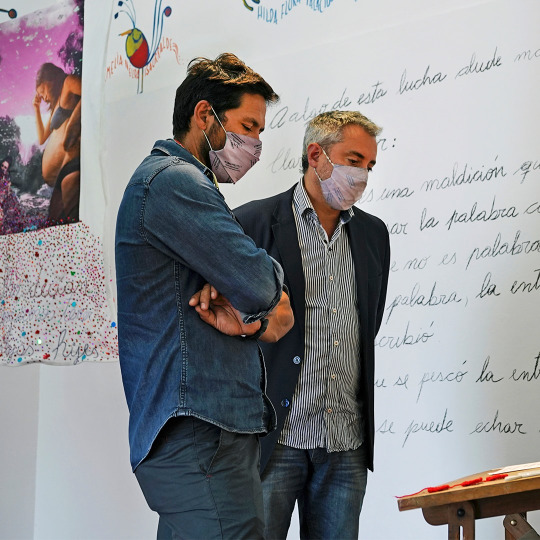

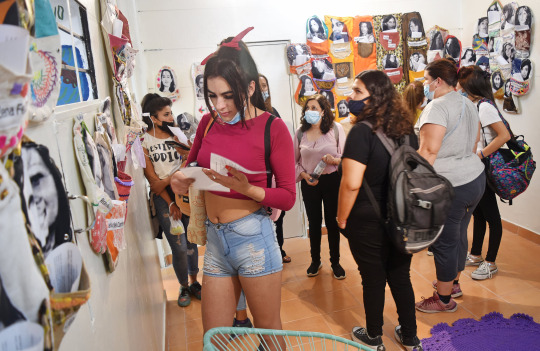
In this exhibit to honor women political prisoners of La Perla, the most heart-wrenching image is that of an anguished pregnant captive. Impregnating captured leftist women was a deliberate Junta tactic. It was seen as the ultimate conquest of the Revolution. Prisoners were repeatedly violated until pregnancy became a near certainty for any fertile woman. Guards derisively referred to captives as "breeding mares". It is so tragic that a new human life was created out of this misogynist abuse of women. There was such an intense hatred of leftist women and a desire to control and dominate them down to their very biology. Having a child growing inside her was a visual confirmation of that domination. They considered women a reproductive resource they had captured from the enemy.
This was their ultimate display of power over women who had once been politically dangerous. Even in her advanced stage of pregnancy, the security protocol of keeping women prisoners in nothing but their underwear was still maintained. It made her swollen belly stand out all the more prominently. She was shown off like a trophy by the proud father. Subversive Marxist women forced to be mothers conformed to conservative Catholic ideology on the role of women. The women who once threatened Junta, would now bear children for Junta. Forced pregnancy was a systematic deliberate strategy of torture. After giving birth, the babies would be stolen from the mothers and given to conservative Argentine families to raise. Imprisoned leftist women were used as forced surrogates for loyalist families of the regime. We must never forget what an unimaginable price women paid for fighting for the cause.
The exhibition “ You Are Us: Women in La Perla” is a space “to combat from our emotions the cruelty that marks our bodies, to think about how power passes through us and how we resist, to meet between generations and embrace each other in our struggles. It is a space for collective reflection on the systematic violence against women carried out in this Clandestine Center for Detention, Torture and Extermination (CCDTyE) as a form of extermination of the political opposition. It is a space of memory and tribute,” expressed the workers of the “La Perla” Memory Space.
How to look at the ineffable pain and horror of the gender, sexual, symbolic, and physical violence that existed in the Clandestine Detention Centers is something that took longer to name and make visible.
The faces, their looks in the photos, question us forever. The exhibition is covered with embroidery, which weaves together the disobediences of yesterday and today in colors. They are a reminder of the tenacity of those suffering and fighting bodies, of the hopes that should not be forgotten. They are a reminder of time that cannot be suspended and that presses the present.
“Sexist violence, patriarchy and state terrorism can be a combo that no one would even want to look into."- Maria Cristina
Weave together the plots, stories of pain, oppression, abuse, sexual violence on our bodies Accuse and denounce crimes, torture, inhuman treatment, sexual abuse... demand memory, truth and justice!!!- Emiliana Tassi
1 note
·
View note
Text


The Israeli occupation authorities extended the detention of Palestinian journalist Mervat Al-Azzeh, from occupied Jerusalem, knowing that she was arrested on November 16, according to the Palestinian Prisoners' Affairs and Liberators Authority and the Palestinian Prisoners Club.
Local and press sources reported that the Israeli occupation authorities summoned the journalist Mervat Al-Azzeh, 45, to the police station of the settlement of Nevi Yaqoub, which is established on the occupied lands of Jerusalem, against the background of her Facebook posts.
Al-Azzeh was transferred to an Israeli military court in Jerusalem, and her detention was extended for trial on charges of "incitement" on social media, a charge that the occupation authorities attach to all those who stand in solidarity with the Palestinians and the genocide they are subjected to in Gaza.
Since last October 7, when the resistance of "Qassam", the military wing of Hamas, launched Operation Al-Aqsa Flood, which resulted in the death of more than 1,200 Israelis and the start of the occupation's aggression on Gaza, the Israeli forces arrested 38 journalists in the West Bank governorates, 30 of whom are still behind bars, bringing the number of journalists currently in the Israeli occupation prisons to 44.
135 notes
·
View notes
Text
🇵🇸 FREE PALESTINE ! 🇵🇸 PLEASE READ THIS
Tw disturbing themes
Credit: Adnan.barq on Instagram
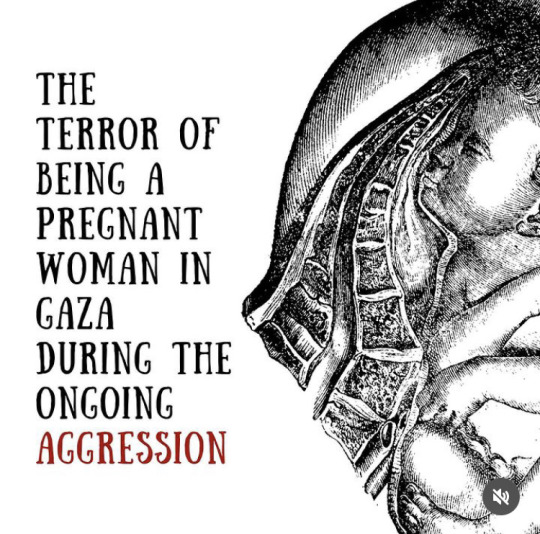






56 notes
·
View notes
Text
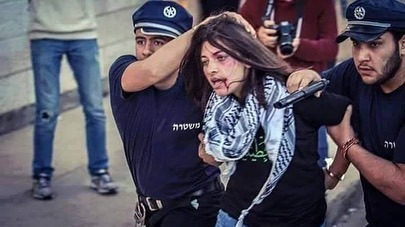
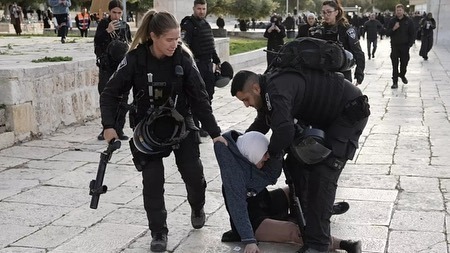




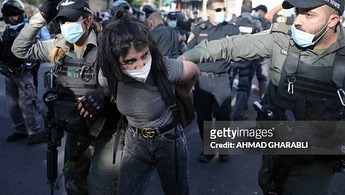


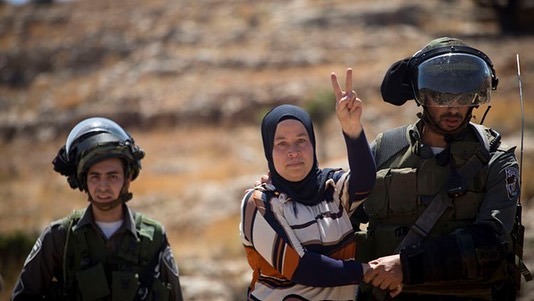
Women in Israeli Damoun prison are exposed to aggravated retaliatory penalties.
The Commission of Detainees' Affairs emphasized that women detainees in Damoun prison, especially those who have been arrested from Gaza, are suffering from difficult detention conditions and exposed to aggravated penalties on a daily basis.
According to Addameer Organization, the majority of Palestinian women prisoners are subjected to some form of psychological torture and ill-treatment throughout the process of their arrest and detention, including various forms of sexual violence that occur such as beatings, insults, threats, body searches, and sexually explicit harassment. Upon arrest, women detainees are not informed where they are being taken and are rarely explained their rights during interrogation.
The Commission confirmed that the Israeli occupation forces have mounted a massive detention campaign afflicting women in the West Bank, Jerusalem and Gaza, indicating that all of them have been subjected to torture and assault during arrest and investigation.
The commission stated that the IPS intended to isolate women detainees, committing the worst crimes against them, represented in:
- sudden inspection at any moment
- they suffer from the cold weather, due to lack of clothes and covers
- poor quality and quantity food
- overcrowding in cells and rooms due to the high number of detainees in the same place
- IPS confiscated all electrical appliances such as radios and TVs, etc.
The commission demonstrated that the aforementioned practices represent a small part of their suffering, and called on the international community to denounce the Israeli practices against Palestinian detainees, in which they violated international norms and laws.
Disclaimer: the first picture was a reenactment of a street play to bring awareness to the cause of unjust detentions by Israeli forces.
203 notes
·
View notes
Text
A final example of the ways in which the lives of prisoners and guards crossed paths was through ‘romantic’ relations – I use this term extremely dubiously, as any relationship between guard and prisoner cannot be considered consensual and is inherently unequal. According to Villani, the prisoner Lucía married a torturer known as Cat, ‘the inventor of Carolina, an instrument of electric torture’. Villani did not know whether Cat had ever tortured Lucía, however he was certain that Cat had been present during interrogations because ‘he came often to check in on Carolina’. Regardless of their married status, the conditions in which Lucía and Cat met must be seriously taken into consideration. Further, female survivors of ESMA recall being taken on ‘pseudo-dates’ by guards to hotels or restaurants against their will. In her testimony published in 2007, Marta Álvarez commented on the duality of the men who were involved in these actions: ‘It was crazy, right? Because the same one who tortured you, that same one… was the same who seduced you.’
Sexual contact between guards and female desaparecidas will only briefly be mentioned as to avoid addressing sensitive material. ESMA detainee Graciela García stated that she felt compelled to engage in sexual contact with a top officer, known as Tigre Acosta, as a means of survival. Other women expressed similar opinions in their testimonies. Eduardo Pavlosky’s Paso de dos (A Dance of Death), a play first performed in 1990, portrays a ‘love story’ between torturer and victim during the Dirty Wars, aiming to portray a female experience comparable to those recorded in testimonies. Although the writers of Paso de dos termed the play ‘feminist’, the problematic amount of violence present in each scene can be argued to have taken away from its main point, which was that the mind of the female prisoner never gave in to her captor. The Argentine human rights organisation Madres de Plaza de Mayo condemned the play for this very reason. It seems clear that, in many of the camps, the boundary between female prisoners and guards was blurred. However, for the women victims, this was simply a means of survival.
4 notes
·
View notes
Text
Sadly there was a lot of misogynist violence especially directed against Red Finnish women who defied traditional gender roles and fought in the Civil War.
"Women wearing men's clothing, such as trousers or a military outfit, were commonly considered armed fighters and summarily shot. Women tried to get rid of their trousers, and sometimes wore nothing but underpants as they were picked from a crowd of captured Reds."

This was a powerful film on the topic
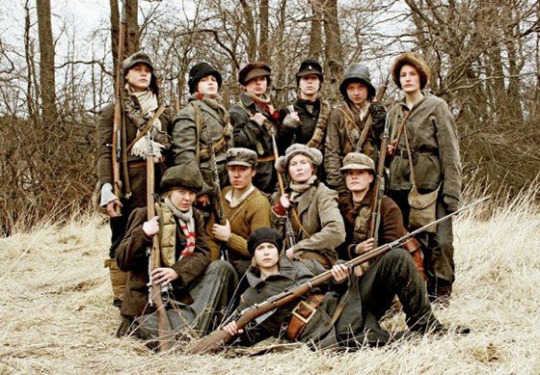
they really killed off all based finnish people (aka communists) back in 1920s, huh.
2K notes
·
View notes
Text
What are the driving forces behind this development, and what does it tell us about the transformations that are taking place in the global economy and in the social position of women? Answers to these questions have varied, but it is my objective to demonstrate that, while this new surge of violence takes different forms, a common denominator is the devaluation of women’s lives and labor that globalization promotes. In other words, the new violence against women is rooted in structural trends that are constitutive of capitalist development and state power as such, in all time periods.
Capitalist development begins with a war on women. The witch hunts of the sixteenth and seventeenth centuries in Europe and the New World led to the deaths of thousands. As I wrote in my 2004 book Caliban and the Witch, this historically unprecedented phenomenon was a central element of the process that Marx defined as primitive accumulation, for it destroyed a universe of female subjects and practices that stood in the way of the nascent system’s main requirements: the accumulation of a massive workforce and the imposition of a more constraining discipline of labor. The naming of women as witches and the persecution of them for their witchcraft paved the way for the confinement of women in Europe to unpaid domestic labor. It legitimated their subordination to men in and beyond the family. It gave the state control over their reproductive capacity, guaranteeing the creation of generations of new workers. In this way, the witch hunts constructed a specifically capitalist, patriarchal order that has continued into the present, though it has been constantly adjusted in response to women’s resistance and the changing needs of the labor market.
From the tortures and executions to which women accused of witchcraft were subjected, other women soon learned that they would have to be obedient and silent, and would have to accept hard labor and men’s abuses, in order to be socially accepted. Until the eighteenth century, those who fought back might be condemned to the “scold’s bridle,” a metal and leather contraption, also used to muzzle slaves, that enclosed the wearer’s head and, if she attempted to speak, lacerated her tongue. Gender-specific forms of violence were also perpetrated on American plantations where by the eighteenth century (per Ned Sublette and Constance Sublette’s 2015 study The American Slave Coast) masters’ sexual assaults on female slaves had turned into a systematic politics of rape, as planters attempted to replace the importation of slaves from Africa with a local breeding industry centered in Virginia.
Violence against women did not, of course, disappear with the end of the witch hunts or with the abolition of slavery. On the contrary: It was normalized. The sterilization of women of color, poor women, and women who practiced their sexuality outside marriage continued into the 1960s. Similarly, until feminists forced its recognition, rape in the family did not exist, as far as the state was concerned. As Giovanna Franca Dalla Costa pointed out in Un lavoro d’amore (The Work of Love, 1978), violence has always been present as a subtext, a possibility, in the nuclear family, because men, through their wages, have been given the power to supervise women’s unpaid domestic labor, to use women as their servants, and to punish their refusal of this work. This is why domestic violence perpetrated by men was, until recently, not considered a crime. In parallel with the state’s legitimation of parents’ right to punish their children, who must be trained in obedience so that they’ll be tractable workers, domestic violence against women was tolerated by the courts and the police as a legitimate response to women’s noncompliance in their domestic duties.
It’s essential to emphasize that violence against women is a key element in this new global war not only because of the horror it evokes or the messages it sends, but also because of what women represent in their capacity to keep their communities together and, equally importantly, to defend noncommercial conceptions of security and wealth. In Africa and India, for instance, until recently, women had access to communal land and devoted a good part of their workday to subsistence farming. But both communal land tenure and subsistence agriculture have come under heavy institutional attack, criticized by the World Bank as one of the causes of global poverty, the argument being that land is a “dead asset” unless it is legally registered and used as collateral to obtain bank loans with which to start some entrepreneurial activity.
#marxism-feminism#women's rights#Silvia Federici#VIOLENCE AGAINST WOMEN#femicide#primitive accumulation
8 notes
·
View notes
Text
Mugshots of women political prisoners from Brazil
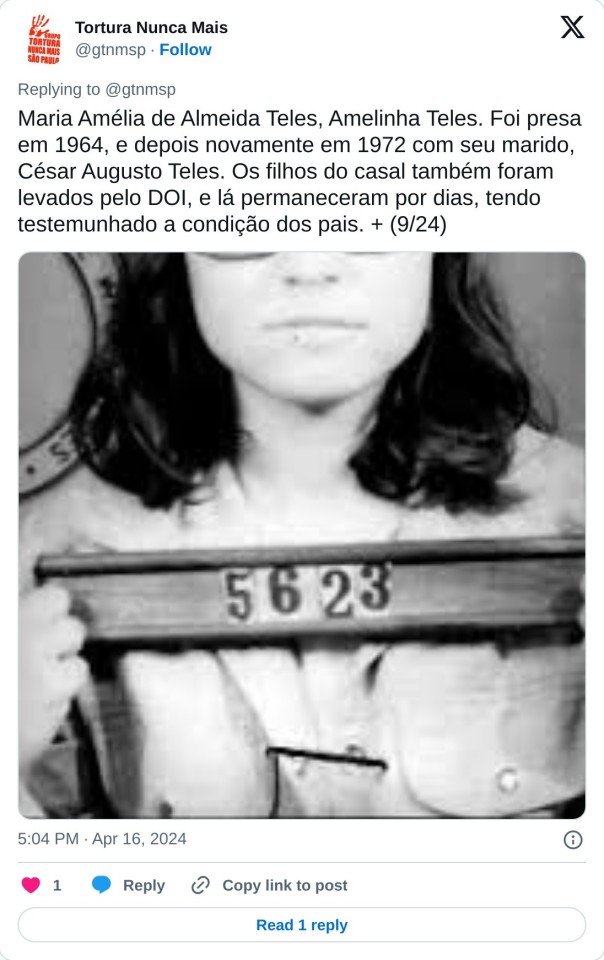

Maria Amélia de Almeida Teles, Amelinha Teles. She was arrested in 1964, and then again in 1972 with her husband, César Augusto Teles. The couple's children were also taken by the DOI, and remained there for days, witnessing the condition of their parents. + ( 9/24)

Maria Aparecida dos Santos, Cidinha. She broke with the Brazilian Communist Party – PCB (the Party), to join the ALN, a dissent from Marighella. Her capture occurred when she was preparing to leave on a trip to Cuba to undergo guerrilla training, + (7/24) then 22 years old. Her imprisonment in the Tiradentes Prison Tower lasted more than three years. + (8 /24)

When she was arrested in 1969, she was a member of the VPR (Vanguarda Popular Revolucionária). She suffered the most atrocious abuse, but resisted and managed to leave Brazil and passed through several countries, until she was the first exile to return, in 1979, with the Amnesty Law. + (6/24)

Rose was tortured and imprisoned for 9 months, and was tried and acquitted in 1972. Today she presides over the Tortura Nunca Mais Group in SP. + ( 11/24)
Women participated in the resistance to the dictatorship on the most diverse fronts: in the countryside and in large urban centers, participating in logistical actions, support activities and armed struggle. Even so, they are seen as supporting forces in the resistance to the dictatorship with men considered its protagonists.
#Tortura Nunca Mais#political prisoners#partido comunista brasileiro#brazil#military junta#Vanguarda Popular Revolucionária
2 notes
·
View notes
Text
Historic: Karol Cariola becomes the first communist militant to preside over the Chamber of Deputies
After the immense difficulties, Communist women endured under Pinochet, it is a demonstration of their unbreakable strength and resilience to rise above that historic tragedy, that today a Communist Party woman will preside over the Chamber of Deputies of Chile. Presidenta de la Cámara de Diputados y Diputadas

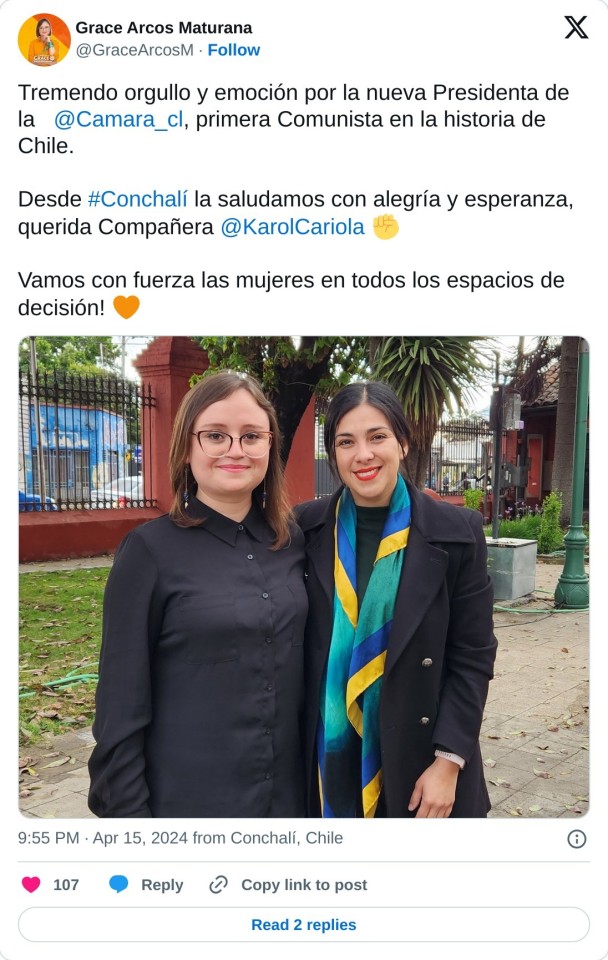

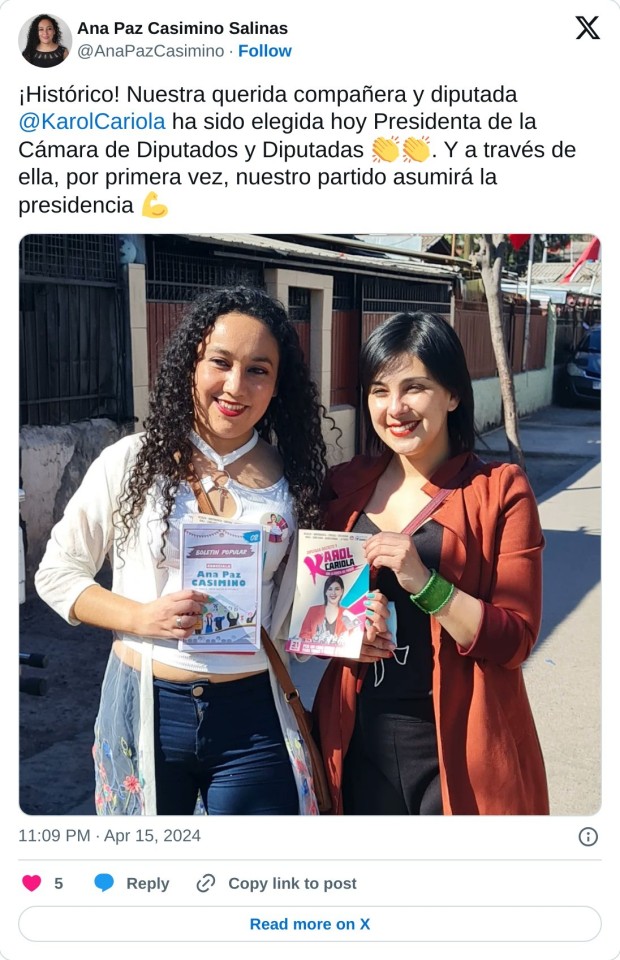

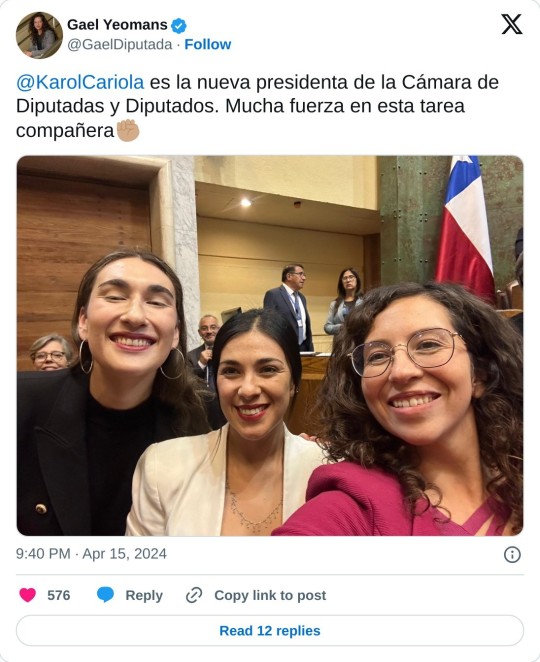

#marxism-feminism#Karol Cariola#Presidenta de la Cámara de Diputados y Diputadas#chile#Partido Comunista de Chile
8 notes
·
View notes
Text

que a injustiça não te derrube
mas que te faça lutar
44 notes
·
View notes
Text
Sexual violence: the forgotten chapter of the military dictatorship of Brazil
Despite being present and constant, the sexual violence practiced by repression agents, authorized by the regime's top brass to torture any suspect, is hardly mentioned in history books and other more common records about the period. One of the challenges faced by consultants, academics and specialists who worked at CNV was precisely to bring these reports to light.
"Sexual violence is an unknown aspect of the military dictatorship. Even today, even after the publication of the CNV's final report, it is something that remains little known because it is a taboo topic and carries this extra burden when discussed", says Glenda Mezzaroba, scientist politician who coordinated the working group "Dictatorship and Gender" at the CNV and author of the book A reckoning with the future: amnesty and its consequences, a study of the Brazilian case . "
According to the political scientist, it was extremely important to conceptualize very well what can be considered sexual violence using the concepts of international bodies such as the World Health Organization. Especially because at the time of the military regime (and even today) the concept of sexual violence and rape are very focused on whether or not there was penetration. And the reports collected show that there was, indeed, sexual violence that did not necessarily involve penetration of the vagina or anus, "The majority of victims did not have the idea that being forced to be naked at the time of arrest is already sexual violence," explains. "We even observed that there were allegations of sexual violence in the book that Carlos Marighella published in 1965, reporting electric shocks to the genitals. However, there was not much clarity in the classification of this violence.
The chapter reserved for sexual violence in the final report of the National Truth Commission published in 2014, showed how the agents of repression had a macabre appreciation for the practice. In the reports, the initial act of stripping the prisoner naked and placing him in front of other agents and spectators was standard. Verbal humiliation, accusations and death threats against companions, family and friends then followed. Women were raped in front of their spouses as a way to get them to hand over information.
"I was there, I was vulnerable, completely vulnerable. Then the guy put his hand inside my clothes and then, well, like any other sexual abuse, I won't describe details, but that's what happened. His hand went through everything and I don't know what. He said: 'No, she's going to cum, with me she's going to cum and she's going to talk'. That's just normal people's stuff."
The excerpt above was taken from the testimony of Ieda Akselrud de Seixas, daughter of Minas Gerais militants, raped at DOI-CODI in 1971 when her entire family was arrested for involvement in revolutionary movements that fought against the military regime. Ieda, like several women and men, reports that it took some time to understand that the rape she suffered was also part of the military's torture method.
"But it took me a long time to realize that it was sexual abuse, do you know why? I minimized that episode because, after all, it wasn't a macaw's dick, it wasn't a shock and it wasn't a dragon's chair. That's really crazy! It's really crazy," she said.
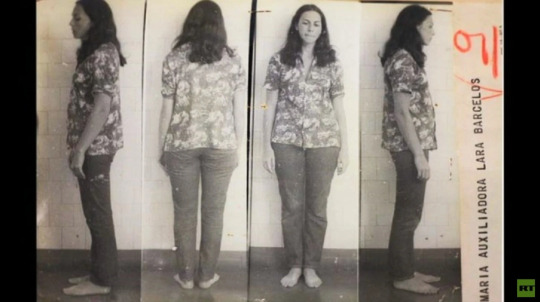
Maria Auxiliadora Lara Barcelos, known as "Dora", was arrested in 1969 and taken to the Army Police barracks , in Vila Militar , where she was stripped naked, beaten, and subjected to electric shocks on her breasts, vaginas and various parts of her body. She was banished to Chile in 1971, but had to leave the country because of the Pinochet dictatorship. Dora never recovered from the emotional consequences left by torture and committed suicide in 1976 at the age of 31 in West Berlin. Photo: Reproduction.
The simple fact that they were women, whether left-wing militants or not, was also a reason for the military to curse and verbally humiliate the captured women. The common sense was that they were to blame for being there, as it was far from their role as daughter, wife or mother. Gender hatred was evident. That's why they called them "whore", "slut" and any other adjective that is the counterpoint of saint. The only two roles applicable to women in the regime's view.
"Because you are a woman, you also realize that there is perhaps, sometimes, a much greater anger, I don't know if it is because of the question of thinking 'why is a woman doing this? Why is a girl doing this?' And it's a way, perhaps, of wanting to disqualify you in every way. In fact, the least you hear is that you're a 'cow' That's the way you're called," reported Maria. Aparecida Costa to CNV.

According to the final report, sexual violence was not occasional but rather widespread as a common practice throughout the repressive structure of the regime. "In the testimonies analyzed by the “Dictatorship and Gender” working group, DEIC, DOI-CODI, DOPS, Galeão Air Base, Army Police battalions, Casa da Morte (Petrópolis), Cenimar, CISA, police stations, Oban are mentioned. , military hospitals, prisons and barracks," says item 37 belonging to chapter 10 of the final report of the National Truth Commission.
In addition to the emotional scars that the torture left on the victims, there are still some who carried great guilt for having given up information about their companions during the torture sessions. This issue was also addressed by the team coordinated by Mezzaroba. In an anonymous statement, a woman reports the great guilt she felt after not having resisted the pain during torture and revealed information to the military. She was arrested at 19 years old.
"(…) We can hear in the speech of many of those who have gone through the experience of imprisonment and torture, referring to themselves, expressions such as “I resisted”, “I didn't inform on”, “I didn't turn anyone in”. Or, referring to others, expressions like: “he didn’t open anything”. (…) Expressions that, on the one hand, reflect the feeling of pride and honor of those who say them, also carry with them, implicitly, even if subtly, a painful accusation against those who say them. who, for some reason, didn't resist. Maybe they don't understand their pain," said the victim in her report.
Mezzaroba says that the owner of the above statement carried a load of guilt, apart from the inevitable psychological consequences of anyone who was a victim of torture promoted by the State. "She brought great pain, embedded in this logic that you should resist and not give anything away. In fact, everything that happens from the first violence in torture, nothing becomes the victim's responsibility after that. (…) she was the victim of unspeakable and incapable of measurement violence. Nothing that happens under torture is the responsibility of the victim. There, the human being no longer has control over his or her body. which is really important."
13 notes
·
View notes
Text



Lesbians and Communists occupy a bar to debate politics.
Opening of the 4th Pelotas Lesbian Visibility Week, created by CFCAM and fighting women from the city. "We are Les, Bi and Sapatão against Bolsonaro, the patriarchy and the boss" was the theme of the circle. Dykes and allies occupied a bar to debate politics! ✊🏽
Coletivo Feminista Classista Ana Montenegro CFCAM is a national collective linked to the Brazilian Communist Party (PCB) that operates in several regions of Brazil. ☭ classist feminism, socialist future! ☭



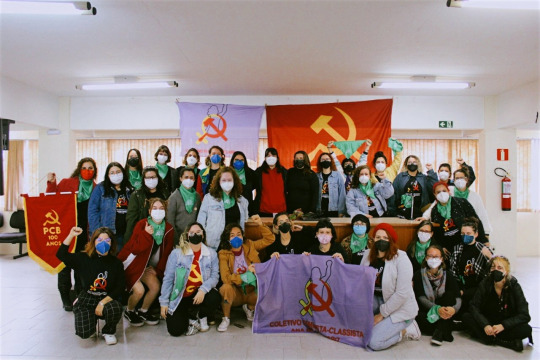
#Partido Comunista Brasileiro#Coletivo Feminista Classista#marxism-feminism#lesbian communism#lesbian feminist
31 notes
·
View notes


